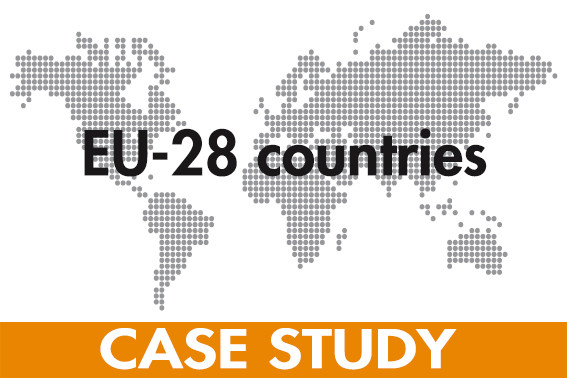Case Study: EU-28 broiler sector to grow again

The EU-28 broiler sector is expected to continue to grow in 2016 and 2017, benefiting from increased exports, slowly increasing domestic demand, and because it is less affected than other meats by the economic downturn in Europe since it is cheaper and more convenient.
Overall EU-28 production in 2016 encompasses various situations, but broiler meat production is expected to increase from 2015 in most major EU producing countries, and especially in Poland which is now the leading EU-28 broiler meat producing country, according to a recent USDA GAINS report.
Poultry production across Europe
France’s production is stalling because of sluggish exports. In Germany, production growth has come to a standstill because of welfare and environmental issues. Production will also remain flat in Spain, because of the pressure from the retail industry on producers negatively impacting producer margins. On the other hand, production is expected to grow in Belgium, Italy, Hungary, Romania, Bulgaria and UK.
With a very limited rebound in the EU-28 economic situation foreseen for 2017 (which favours cheap protein sources and continued strong domestic demand for poultry meat) combined with continued export demand, EU-28 broiler production is expected to grow again in 2017, albeit at a slower rate. However, the short, 2-month production cycle of the broiler industry makes it very reactive to outside events, both on the upside and downside, making accurate forecasts difficult.
The significant decline in grain prices since 2014 boosted broiler meat competitiveness and increased operating margins, even as retail prices decreased. This trend is expected to continue in 2016 and 2017. The EU-28 broiler trade surplus is expected to increase in 2016 and 2017 in light of stagnant imports and surging exports.
Poultry meat consumption trends
While all sources show that total meat consumption in the EU-28 has been negatively impacted by the economic downturn, broiler meat, which is the cheapest source of protein, was less affected. However, its consumption growth is less than demographic growth, which means that per capita consumption is declining slightly but generally stable.
Several market analyses showed that, while EU-28 consumers generally switched from beef or pork meat to broiler meat, the low-income consumers reduced their protein purchases, switching to carbohydrate products (bread, pasta) with the exception of Spain, where pork meat is preferred over broiler meat. In the EU-28, sales of cheaper cuts (legs and wings) also increased faster than sales of more expensive parts, such as breasts or whole birds. This trend is expected to extend into 2017 in the absence of any economic recovery.
Poultry meat suppliers to EU-28
Brazil and Thailand remain the largest suppliers of broiler meat to the EU- 28. Since 2012, the opening of the EU-28 market to Thai un-cooked broiler meat led to a significant increase in exports of Thai salted and frozen broiler cuts and parts to the EU-28 to the detriment of Brazilian exports. It has been reported that the quality of Thai broiler meat better suits EU importer needs.
The signature of the Deep and Comprehensive Free Trade Agreement (DCFTA) between the EU- 28 and Ukraine led to a surge of Ukrainian broiler meat exports to the EU-28 which are now expected to reach 37,000 MT in 2016. EU-28 broiler meat exports are expected to increase in 2016 despite the Russian embargo on certain EU food products imposed since August 2014 and the decrease in exports of French frozen whole broilers to the Middle-East region, due to the stagnant demand in Saudi Arabia and the political situation in Yemen.
[Source: USDA ]







![Birthe Steenberg, AVEC’s Secretary General: “Our [poultry] sector operates under the highest standards of animal welfare, biosecurity and sustainability in the world. Photo: Canva](https://www.poultryworld.net/app/uploads/2024/10/Untitled-design-79-389x260.jpeg)





